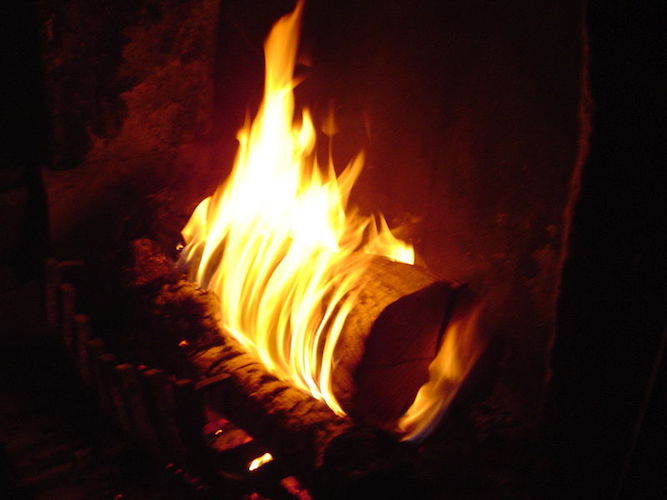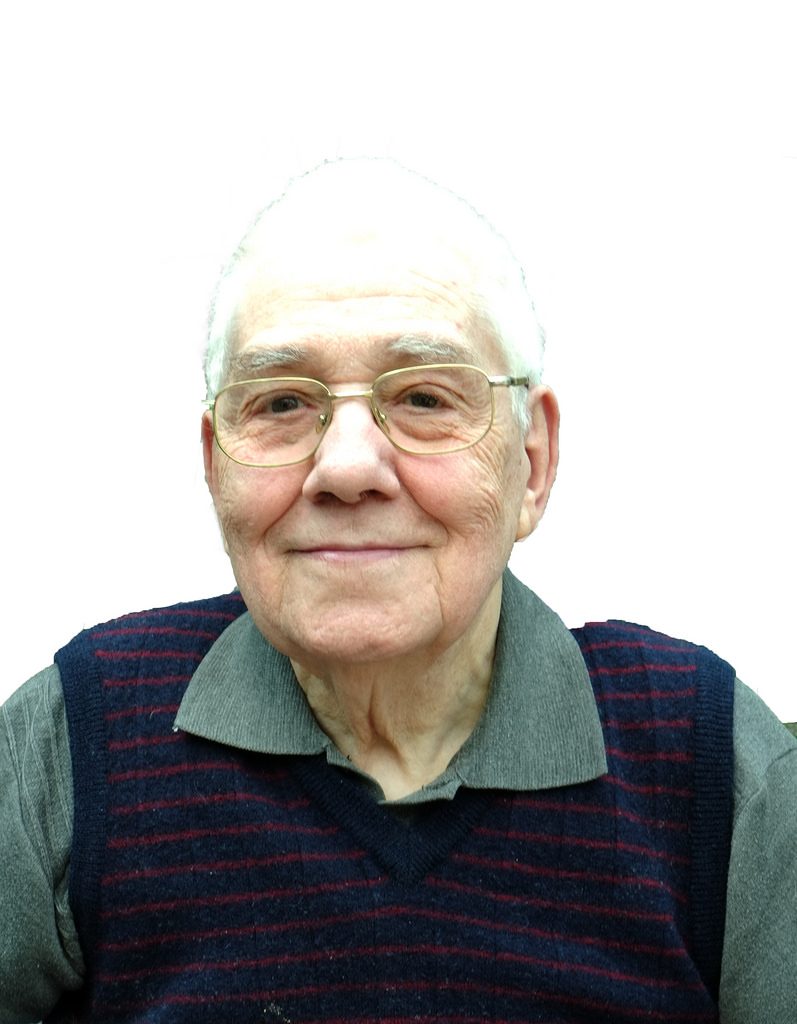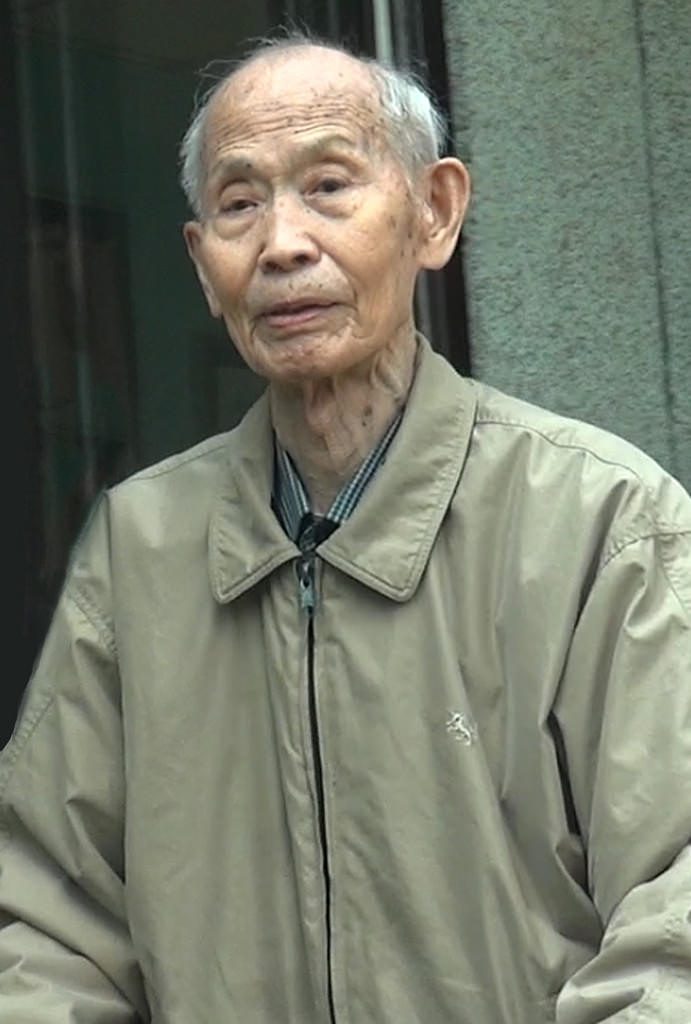Working together to form young persons of faith in our schools
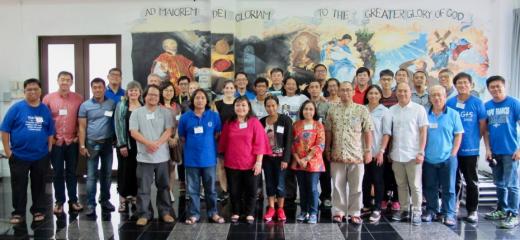
How do we accompany young people in the mission of reconciliation and justice? How do we engage students in this digital age? Who are we in what we do? These were some of the questions discussed in the first JCAP Meeting of Chaplains and Campus Ministers. Continue reading “Working together to form young persons of faith in our schools”
Wisdom Story – 285
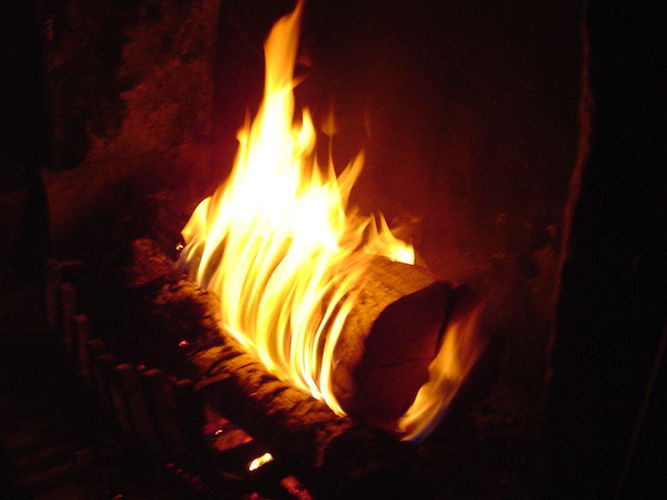 A member of a certain church, who previously had been attending services regularly, stopped going.
A member of a certain church, who previously had been attending services regularly, stopped going.
After a few weeks, the pastor decided to visit him. It was a chilly evening. The pastor found the man at home alone, sitting before a blazing fire.
Guessing the reason for his pastor’s visit, the man welcomed him, led him to a big chair near the fireplace and waited. The pastor made himself comfortable but said nothing. In the grave silence, he contemplated the play of the flames around the burning logs.
After some minutes, the pastor took the fire tongs, carefully picked up a brightly burning ember and placed it to one side of the hearth all alone. Then he sat back in his chair, still silent. The host watched all this in quiet fascination.
As the one lone ember’s flame diminished, there was a momentary glow and then its fire was no more. Soon it was cold and “dead as a doornail.”
Not a word had been spoken since the initial greeting.
Just before the pastor was ready to leave, he picked up the cold, dead ember and placed it back in the middle of the fire. Immediately it began to glow once more with the light and warmth of the burning coals around it.
As the pastor reached the door to leave, his host said, “Thank you so much for your visit and especially for the fiery sermon. I shall be back in church next Sunday.”
About Us
 Companions of Jesus
Companions of Jesus
The Society of Jesus (the Jesuits) is a religious order of the Roman Catholic Church with members spread throughout the world. There are presently in Taiwan 200 Jesuits coming from 25 countries.
Jesuits are continuing the mission of Jesus Christ to preach, teach, heal, and reconcile. We ponder and interpret what God is saying in our hearts and we hope that finding God in all things we may with all our strength proclaim His glory.
We are ready to follow God under even the most difficult circumstances, to enter into and engage in dialogue with those of other faiths, cultures and value systems, and to stand in the front lines in the pursuit of justice and peace, bringing the message of the gospel that all men are yearning for deep in their hearts.
For more information about us please feel free to click here.
Increasing collaboration on disaster risk reduction and management
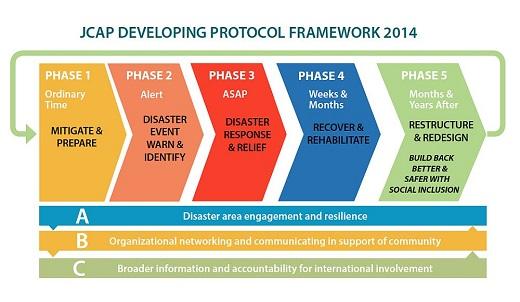
While people in many Jesuit institutions are doing great work in DRRM, having a protocol taps and develops the great potential for magis as more people are reached, networks are broadened, impact multiplied, and response is deepened. A protocol for coordination amongst people provides a system for decision-making and action that outlines procedures and actions to be followed in a particular situation.
The JCAP protocol is a work in progress to guide Jesuit collaborative action and is presently part of a review in the Philippine Province. Hopefully, the protocol can be used and improved by other Provinces in their areas of concern given the appropriateness of context and emerging networks. It is presently focused on floods and landslides but will be easily adapted to facilitate collaboration in the case of earthquakes, tsunamis, fires, volcanic eruptions, and droughts.
While the disaster management cycle is generally described as having four phases (mitigation, preparedness, response, and recovery), there is an increasing realisation of a fifth phase or redesign. The JCAP protocol presents a coordination framework with five phases:
Phase 1 – Ordinary time: Disaster mitigation and preparedness
Phase 2 – Alert: Disaster event warning and identification
Phase 3 – ASAP: Response and relief
Phase 4 – Weeks and months after the disaster: Recovery and rehabilitation
Phase 5 – Months and years after the disaster: Restructure and redesign
Phases 2 to 4 are where many efforts are ongoing, but there is also increasing recognition of the need for more preparedness during “ordinary time” (Phase 1) when it is not the rainy or typhoon season. This is the perfect time to undertake trainings and workshops.
On the other hand, Phase 5 is when restructure and redesign take place and where lessons learnt from the disaster inform future plans. Building back safer and better with a local social economy is a guiding principle, and is the time to review and revise building standards, zoning plans and policies, economic development programs that are socially inclusive, and networking and organising so that capacities are shared and alliances and agreements are established amongst government, international agencies, professionals, and others from civil society.
Jesuit resource mobilisation is also a topic of concern in the JCAP protocol. Often, local and national disaster resource mobilisations are adequate but when extreme events occur and result in a national calamity, international support is mobilised. Jesuit resource mobilisation can be both national and international, as the benefit of institution and apostolic outreach, as well as communications and networks, is available in many places. Xavier Network is a key partner in international disaster collaboration.
The protocol seeks to integrate Jesuit area disaster engagement on the ground while networking with national and international organisations in support of the communities affected. To facilitate donations and support, a clear and simple process is needed for donors to make contributions. And most importantly, a transparent and accountable system for monitoring and reporting funds is needed so that donations are properly documented, official receipts are issued as needed, and donors are kept informed of developments.
This transparent and accountable fund management is also crucial for securing long-term resources for post-disaster rehabilitation, restructure, and redesign. International awareness has to recognise that the long-term problem is tied not only to climate change impact through more extreme weather events but also to livelihoods and secure tenure of homes. These are critical in reducing the social impact of disasters.
Donor expectations and resource mobilisation need to be re-assessed so that social and economic inclusion are built into the financial assistance provided, beyond relief and provision of roofs, housing materials, houses, and fishing boats. The key elements are access to land, sustaining the local social economy, building capacity in local government, and developing a diversity of options for livelihood and entrepreneurship.
“God is Creator of the universe and all life, and in disaster risk reduction we are challenged to experience through our faith how to embrace “natural” disasters,” said Fr Pedro Walpole SJ, JCAP Coordinator for Reconciliation with Creation. “We are learning humbly that we are embracing not an “act of God” but human vulnerability and mortality as part of an ongoing Creation. At the same time, it is beginning to dawn on us that we are partly a trigger of our own suffering through climate change. In our faith, we slowly come to understand that the crucified Christ silently accompanies those who suffer. We need to be able to communicate this while expressing deep hope for humanity, knowing God’s fidelity to us. This is why today we seek a much deeper response of compassion and reconciliation on Earth.” [EcoJesuit]
To find out more about the JCAP coordination protocol for disaster risk reduction and management, click here.
【R.I.P.】Bro. Gérard Aubin went peacefully to the Lord
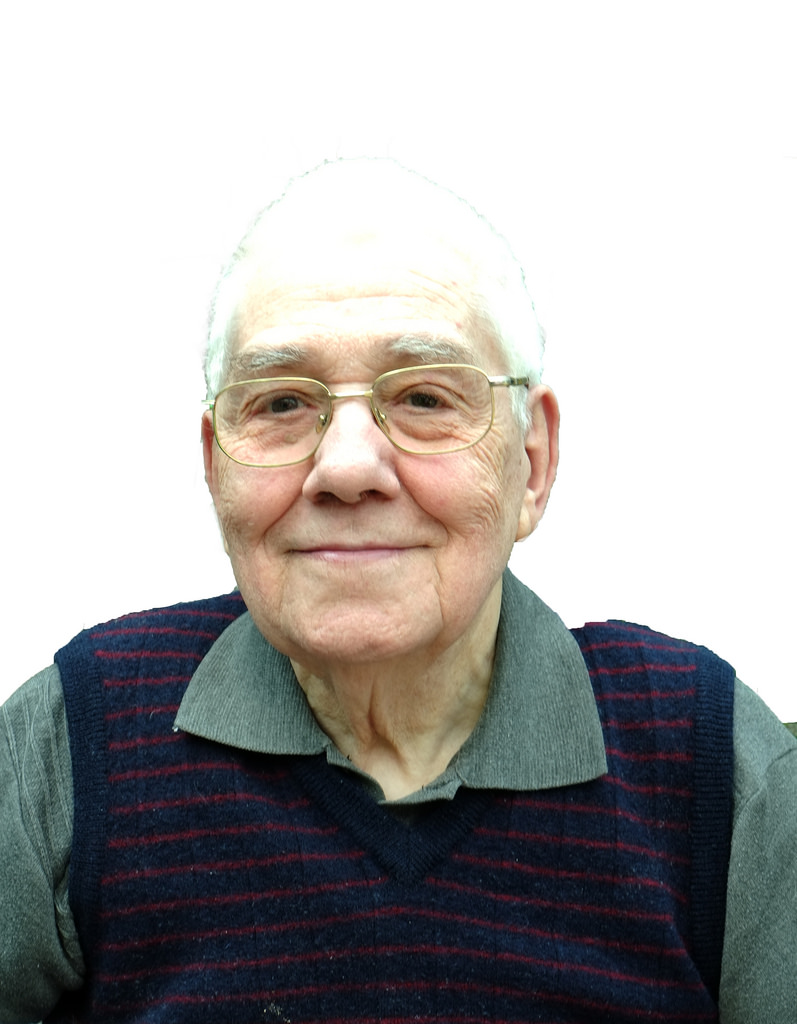
Bro. Gérard Aubin went peacefully to the Lord on December 25, 2015 at the Cardinal Tien Hospital, Taipei, at 1:42 p.m.
Bro. Aubin was born in Upton, Québec, Canada, on May 11, 1921. He entered the Society in Montréal, Canada, on Apr. 15, 1941, and made the last vows on Aug. 15, 1951 in Québec.
All priests of the Chinese Province will celebrate one Mass first intention for Bro. Aubin’s eternal rest. Those who are not priests will offer one Mass and Communion and recite one “corona”. The members of St. Robert Bellarmine community will offer two Masses, etc.
Yours in Our Lord,
Luciano Morra, S.J.
Socius
December 25, 2015AUBIN Thibault, Gérard, S.J., Bro. (歐 斌)
Year/M/Day
1921-05-11 Born in Upton, Québec, Canada
生於加拿大魁北克Upton
Parents: Hervé Aubin and Emilia Thibault
Brothers and sisters: Theresa, Gérard, Lawrence, Dollard
1921-05-21 Baptized at St. Ephrem in Upton
1928-1932 Elementary education in Upton
1932-1939 Helping his father in their farm
1939-1940 Secondary education in St. Hyacinthe Minor Seminary
He left because of his difficulty in learning Latin and because of headaches
1940-1941 Postulant Brother in the Society of Jesus (1940/10/15 – 1941/04/14)
1941-04-15 Entered the Society of Jesus as Novice in Montréal, Canada
於加拿大蒙特羅進入耶穌會
1943-04-16 First Vows in Montréal
1943-1952 In different houses, humble service
1951-08-15 Final Vows in Québec. FF
在加拿大魁北克矢發末願
1952-1953 Studied Mandarin at Chabanel Hall, Manila, Philippines (Oct-07- )
在菲律賓馬尼拉加伯內讀中文
1953-1979 Taipei, Taiwan, at Holy Family, as sacristan, in charge of health care…(Nov 08-)
在台北聖家堂管理輔祭團與管理團體健康
1966-1966 Sabbatical Year in Canada
1979-1981 Huakuang, Kuanhsi, Hsinchuhsien, as ass. minister, prefect of kitchen,…
在新竹縣關西華光擔任理家
1981-1983 Taichung Infirmary, as assistant infirmarian,…
在台中聖依納爵頤福園副主任
1983-1995 Taipei, at TEC (Tien Educational Center), as ass. minister, prefect of kitchen,..
在台北耕莘文教院擔任副理家
1986-1986 Sabbatical Year in Canada
1991-1991 Sabbatical Year in Canada
1995-2011 Taipei, at Holy Family, as ass. minister, assistant sacristan
在台北聖家堂擔任副理家
2000-2000 Sabbatical Year in Canada
2011-04-15 慶祝入會70年
2011-09-27 Province infirmary, Taipei, praying…
於聖若瑟頤福園為教會及耶穌會祈禱
2015-12-25 於新北市新店耕莘醫院安息主懷
【R.I.P.】Fr. Norman Walling went peacefully to the Lord
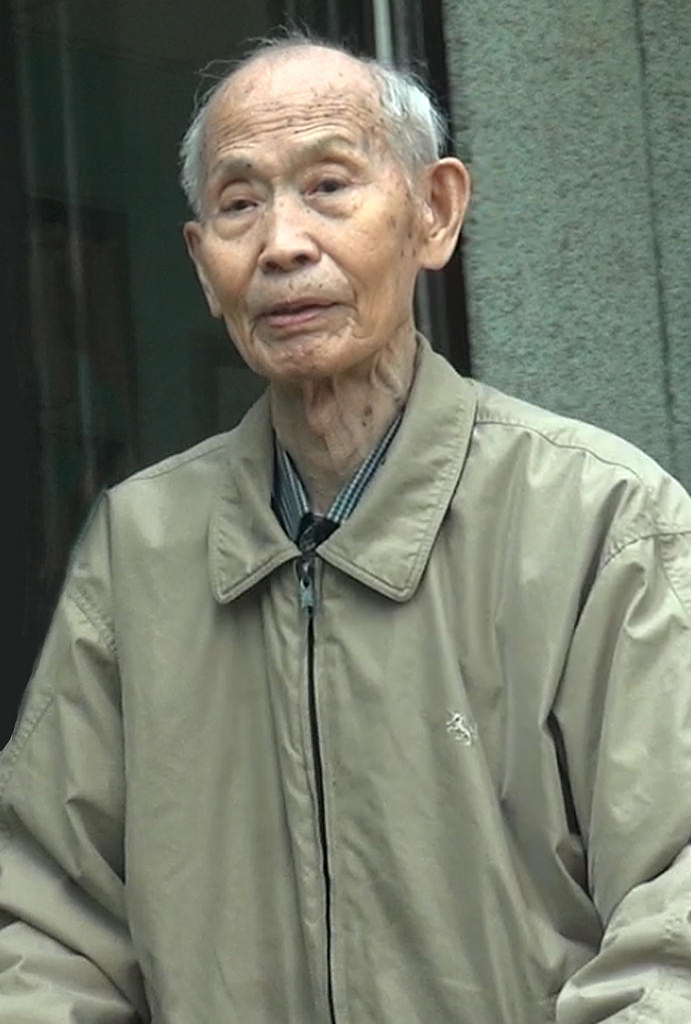
Fr. Étienne Wang Kui went peacefully to the Lord on November 18, 2015 at the
Cardinal Tien Hospital, Taipei, at 10:58 p.m.
Fr. Wang was born in Xuanhua county, Chahar (now Hebei) province, on Jan. 5,
1925. He was ordained to the priesthood in Rome on Dec. 21, 1951, entered the Society in
Aix-en-Provence, France, on Oct. 16, 1961, and professed the last vows on Feb. 2, 1976
on Manila.
All priests of the Chinese Province will celebrate one Mass first intention for Fr.
Wang’s eternal rest. Those who are not priests will offer one Mass and Communion and
recite one “corona”. The members of St. Robert Bellarmine community will offer two
Masses, etc.
Yours in Our Lord,
Luciano Morra, S.J.
Socius
November 18, 2015
Jesuit Father David Hollenbach Named to Maguire Chair at Library of Congress
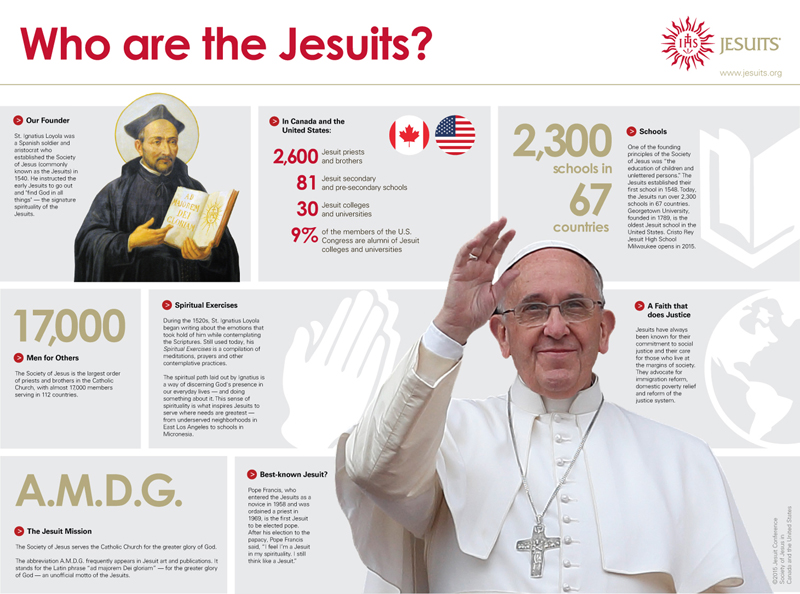
“Who are the Jesuits?” graphic courtesy of Jesuit Conference
(RNS) Figuring out why Pope Francis has upended so many expectations and what he might be contemplating for the future of the Catholic Church has become a parlor game almost as popular as the pontiff himself.
A single key can unlock these questions: Francis’ long-standing identity as a Jesuit priest.
It’s an all-encompassing personal and professional definition that the former Cardinal Jorge Bergoglio brought with him from Buenos Aires, and one that continues to shape almost everything he does as pope — even though he is the first pontiff to take his name from the 13th century Italian monk from Assisi who was famous for living with the poor and preaching to the animals.
“He may act like a Franciscan but he thinks like a Jesuit,” quipped the Rev. Thomas Reese, a fellow Jesuit who is a columnist for National Catholic Reporter.
In fact, it would be easy to mistake this new pope for a new St. Francis of Assisi, given his emphasis on helping society’s outcasts and his focus on the Christian moral duty to protect the environment.
Yet he’s also the first pope from the Society of Jesus, the religious community whose worldly-wise intellectuals are as famous as its missionaries and martyrs.
Indeed, behind that label lies a centuries-old brand of spiritual formation that includes a passion for social justice, a missionary zeal, a focus on engaging the wider world and a preference for collaboration over top-down action.
And as the first Jesuit pope, Francis brings sharply etched memories of being part of a community that’s been viewed with deep suspicion by Rome, most recently by his own predecessor, Pope Benedict XVI.
Jesuit priests are explicitly discouraged from becoming bishops, much less pope, and that outsider’s sensibility helps to explain Francis’ almost breezy willingness to dispense with centuries of closely guarded and cherished tradition.
“We never imagined that a Jesuit could become pope. It was an impossible thing,” said the Rev. Antonio Spadaro, an Italian Jesuit who conducted a book-length interview with the pope and knows him well. “We Jesuits are supposed to be at the service of the pope, not to be a pope.”
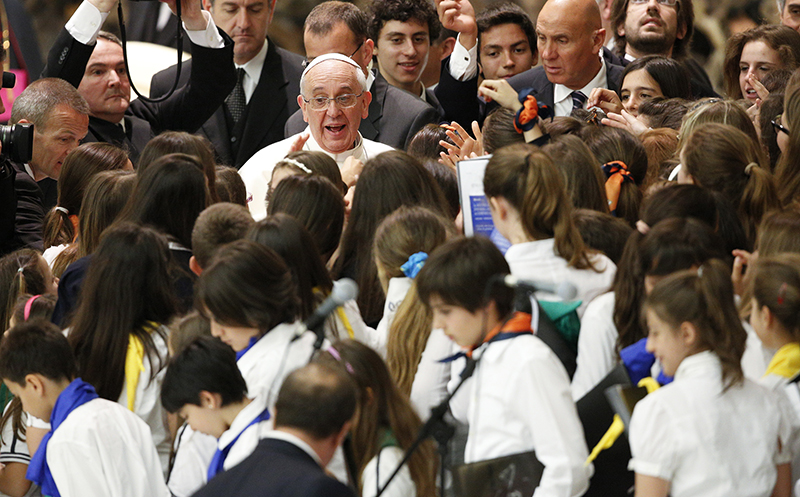
Pope Francis is surrounded by children during a special audience with students of Jesuit schools in Paul VI hall at the Vatican on June 7, 2013. Photo courtesy of REUTERS/Max Rossi
*Editors: This photo may only be republished with RNS-POPE-JESUIT, originally transmitted on September 15, 2015.
This image is available for web and print publication. For questions, contact Sally Morrow.
What is a Jesuit?
The Society of Jesus, as it is formally known, was begun in the 1530s by Ignatius of Loyola, a Basque soldier who underwent a profound religious transformation while convalescing from war wounds. Ignatius composed the Spiritual Exercises, used to guide the Jesuits’ well-known retreats, and in 1540, along with six other theology students at the University of Paris, he won recognition from Pope Paul III as an official church order.
In many ways, the Jesuits are like other religious orders, such as the Franciscans or Dominicans. Jesuits take vows of poverty, chastity and obedience and live in community. Unlike diocesan priests, they are not ordained to a particular geographic diocese to serve the local bishop.
Jesuits are an all-male order; there are no Jesuit sisters. The society has an almost military-style structure and ethos, with shock troops willing to go wherever and whenever the church needs them. They are “contemplatives in action,” in the words of St. Ignatius, and have an especially lengthy period of study and spiritual preparation before taking vows, usually 10 years or more.
Even then, the process is not complete. After another few years, most Jesuits take a special fourth vow of obedience “in regards to mission” to the pope.
If the church needs priests to convert lost souls, the Jesuits are on it. If they are needed to bring Catholicism to new lands, such as Asia or Latin America, they’ll buy a one-way ticket. To advance the church’s mission, the Jesuits established universities such as Georgetown, Fordham and Boston College.
Despite their simple beginnings, the Jesuits remain the largest order in the Catholic Church.
In 1773, Catholic monarchs jealous of the Jesuits’ influence and independence pressured Pope Clement XIV to suppress the order, declaring the society “perpetually broken up and dissolved.” Yet in 1814, the order was restored.
In the 1960s, the Jesuits collectively opted to work for social justice and improve the lot of the poor. In the developing world, that put Jesuits on the front lines of popular movements such as liberation theology. In El Salvador, six Jesuits, along with their housekeeper and her daughter, were brutally executed by a Salvadoran military unit in 1989.
At the same time, the Vatican under Pope John Paul II — aided by his doctrinal chief, Cardinal Joseph Ratzinger — investigated, sanctioned and sometimes silenced Jesuit theologians who were considered too eager to marry the gospel to suspect social movements.
Jesuits have also fallen victim to what some call a “white martyrdom” at the hands of the pope. As recently as 2005, Thomas Reese was forced out as editor of the Jesuits’ America magazine when Ratzinger, his longtime foe, was elected Pope Benedict XVI.
What kind of a Jesuit is Francis?
As a Jesuit in Argentina, ordained in 1969, Jorge Bergoglio found himself in the midst of all this tumult.
The Argentine “Dirty Wars” erupted during the 1970s, and the violence that overtook the country also threatened many priests — especially Jesuits — even as the regime co-opted much of the hierarchy. Bergoglio was made superior of the Argentine Jesuits at the age of 36, thrust into a situation of internal and external chaos that would have tried even the most seasoned leaders.
“I had to deal with difficult situations, and I made my decisions abruptly and by myself,” Francis said last year, acknowledging that his “authoritarian and quick manner of making decisions led me to have serious problems and to be accused of being ultraconservative.”
Bergoglio fully embraced the Jesuits’ radical turn to championing the poor, though he was seen as an enemy of liberation theology. Critics labeled him a collaborator with the Argentine military junta even though biographies show that he worked carefully and clandestinely to save many lives.
None of that ended the intrigue against Bergoglio within the Jesuits, and in the early 1990s he was effectively exiled from Buenos Aires to an outlying city.
In classic Jesuit tradition, however, Bergoglio complied with the society’s demands and sought to find God’s will in it all. Paradoxically, his virtual estrangement from the Jesuits encouraged Cardinal Antonio Quarracino of Buenos Aires to appoint Bergoglio as an assistant bishop in 1992.
“Maybe a bad Jesuit can become a good bishop,” an Argentine Jesuit said at the time.
In 1998, Bergoglio succeeded Quarracino as archbishop. In 2001, John Paul made Bergoglio a cardinal, one of just two Jesuits in the 120-member College of Cardinals.
His rise in the hierarchy, however, only seemed to cement suspicions about him among his foes among the Jesuits.
So when Bergoglio was chosen as pope in March 2013, one could almost hear the collective gasp in Jesuit communities around the world.
“The fact that he had been somewhat rejected, internally, by the Jesuits, if not for that he probably would not have become a bishop,” said the Rev. Humberto Miguel Yanez, an Argentine Jesuit like Francis who heads the moral theology department at the Gregorian University in Rome — a Jesuit school sometimes called “the pope’s Harvard.”
And if Bergoglio had not become a bishop he would not have become a cardinal and, ultimately, pope, since the College of Cardinals by tradition chooses each successor to St. Peter from among its own ranks.
“The stone that the builders rejected,” Yanez quipped, citing a well-known gospel verse, “became the cornerstone.”
What will a Jesuit pope mean for the church?
Now, of course, Francis is a “brother among brothers,” as the current head of the order, the Rev. Adolfo Nicolas, put it.
“My impression is that with his daily homilies and catechesis he is conducting a kind of Ignatian retreat with the whole church,” Austrian Cardinal Christoph Schoenborn said recently.
Francis knows how much the Jesuits are still resented by some corners in the church, and especially in the Vatican, but he has not let that alter his style.
He circumvented the usual protocols to canonize one of Ignatius’ original companions, Peter Favre, whom Francis has praised for being “in dialogue with all, even the most remote and even with his opponents.”
He lives simply, rejecting the traditional papal apartments to live in a small community inside a Vatican guest house. He also preaches forcefully that other clerics, and especially the hierarchy, should eschew the perks and privileges of their office.
Francis’ Jesuit influence extends to his mode of governance. One of his first actions as pope was to name a council of eight cardinals from around the world — none of them from the dysfunctional Roman Curia — to serve as a kitchen cabinet, much the way Jesuit superiors operate. He has used a similar model for tackling specific tasks as well, such as overhauling the Vatican’s finances.
This sort of discernment — listening and contemplating before acting — is a cardinal virtue of the Ignatian spirituality that is at the core of Francis’ commitment to a “conversion” of the papacy as well as the entire church.
But that also means that it’s hard to say exactly what will come next. Francis has repeatedly praised the Jesuit trait of “holy cunning” — that Christians should be “wise as serpents but innocent as doves,” as Jesus put it. The pope’s openness, however, also a signature of his Jesuit training and development, means that not even he is sure where the spirit will lead.
“I confess that, because of my disposition, the first answer that comes to me is usually wrong,” Francis said in a 2010 interview.
“I don’t have all the answers. I don’t even have all the questions. I always think of new questions, and there are always new questions coming forward.”
【R.I.P.】Fr. Norman Walling went peacefully to the Lord
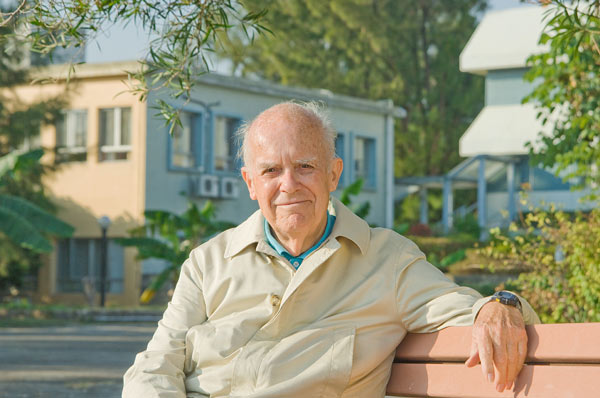
Fr. Norman Walling went peacefully to the Lord on August 28, 2015 at the Cardinal Tien Hospital, Taipei, at 1:58 a.m.
Fr. Walling was born in Beresford, California, U.S.A., on Mar. 26, 1929. He entered the Society in Los Gatos, California, on Aug. 14, 1947, was ordained to the priesthood on Mar. 19, 1961 at the Immaculate Heart of Mary Church, Hsinchu, and professed the last vows on Aug. 15, 1964 at the Sacred Heart of Jesus Church, Hsinchu.
All priests of the Chinese Province will celebrate one Mass first intention for Fr. Walling’ eternal rest. Those who are not priests will offer one Mass and Communion and recite one “corona”. The members of Changhua community will offer two Masses, etc.
Yours in Our Lord,
Luciano Morra, S.J.
Socius
August 28, 2015
萬立民 神父 年表
Fr. Norman Walling, S.J.
1929-03-26 Born in Beresford, California, USA
生於美國加州Beresford
Parents: Robert A. Walling and Amy Anna Vestney
Brothers and sisters: Robert H., Richard F., Agnes A.
1937-05-06 Baptized at St. Joseph’s Church, San Jose, CA
1935-1943 Elementary education at St. Joseph’s Grammar School, San Jose, CA
1943-1947 Secondary education at Loyola High School, Los Angeles, CA
1947-08-14 Entered the Society of Jesus in Los Gatos, CA
1949-08-15 First Vows in Los Gatos, CA
1949-1951 Juniorate in Los Gatos, CA
1951-1954 Studied Chinese Mandarin at Chabanel Hall, Manila, Philippines (Sep 25- )
1954-1957 Studied Philosophy at Chabanel, Manila, Philippines
1957-04-16 Lector at Chabanel Hall, Manila, by Msgr. Rufino Santos
1957-04-17 Acolyte at Chabanel Hall, Manila, by Msgr. Rufino Santos
1957-1958 In Hsinchu, Taiwan, studying Chinese Amoy at Chabanel, teaching English
1958-1962 Studied Theology at the Bellarmine College, Baguio, Philippines
1961-03-12 Ordained Deacon in Changhua by Msgr. Philip Cote, S.J.
1961-03-19 Ordained Priest in Hsinchu by Msgr. Philip Cote, S.J.
1962-1963 Tertianship at Chabanel Hall, Manila (Jun – Apr)
1963-1965 In Hsinchu as minister, treasurer, moderator JOC, assistant pastor
1964-08-15 Final Vows in Hsinchu. P4
1965-1970 In Hsinchu as district superior, parish pastor,
在加州Los Gatos進入耶穌會
在加州Los Gatos念文學
在馬尼拉Chabanel Hall念華語
在馬尼拉Chabanel Hall念哲學
在新竹華語學院念台語及教英文
在菲律賓碧瑤聖博敏神學院念神學
1970-1975 In Changhua as superior, giving Spiritual Exercises…
1975-1976 In Rome, ongoing formation for Tertianship Instructor
1976-1977 At Fujen Bellarmine Community, as Tertianship Instructor
1977-1978 In Changhua giving Spiritual Exercises…
1978-1980 In Hsinchu as Tertianship Instructor
1980-1981 In Hongkong studying Chinese Cantonese, giving Spiritual Exercises…
在新竹市晉鐸
在馬尼拉Chabanel Hall完成第三年卒試
於新竹擔任理家、副本堂及天主教青年工人(JOC)導師
在新竹矢發末願
在新竹擔任地區院長及本堂神父
moderator Marian Congregations, Dean Hsinchu Deanery
在彰化擔任院長及講避靜
在羅馬參加培育第三年卒試導師的課程
在輔仁神學院團體,擔任第三年卒試導師
在彰化講避靜
在新竹擔任第三年卒試導師
1982-1985 In Hongkong as Socius to the Provincial for the Chin. Apost., Retreats…
1985-1991 In San Francisco as collaborator to the Delegate for the Chin. Apost.
1991-1997 In Hongkong as collaborator to the Delegate for the Chin. Apost.
1997-2000 In Cheung Chau as superior of the Spirituality Center, giving Spir. Ex.
2000-2002 In New York as associate pastor at the Transfiguration Church,
2002-2008 In Changhua as superior (Feb 7- ), giving Spir. Ex.
2004-2008 In Changhua…as Tertianship Instructor
2005-2006 In Japan as Assistant Tertian Director (2 summer months a year)
2008-2014 At St. Francis X. Spirituality Center, Cheung Chau, HK, Spiritual Ministry
2014-2015 在彰化靜山靈修中心,從事牧靈工作
2015-08-27 於新北市新店耕莘醫院安息主懷
在香港念廣東話與講避靜
在香港擔任中國福傳工作省長的省佐
Diocesan co-director of Chinese Apostolate
在舊金山擔任中國福傳工作代表的合作者
擔任教區中國福傳工作副主任
在香港擔任中國福傳工作代表的合作者
在香港長洲擔任靈修中心的院長及講避靜
helping Chinese Communities specially immigrants Fuzhou people
在紐約,耶穌顯容堂擔任副本堂與幫助華人團體
在彰化擔任院長及講避靜
在彰化擔任第三年卒試導師及講避靜
在日本擔任第三年卒試導師
在香港長洲靈修中心,從事牧靈工作
Statement on Laudato si’

We, the major superiors of the Jesuit Conference Asia Pacific, sincerely and enthusiastically welcome Pope Francis’ new encyclical Laudato si, (On the Care of Our Common Home). He draws attention to the urgent need for reconciliation with creation, already one of our apostolic priorities in Asia Pacific. We urge all the members of our Conference, our colleagues, and all those we seek to serve to make a thoughtful and generous response to the Holy Father’s plea.
Our many Jesuit works have the potential for far-reaching impact. Yet we know, too, that the first step necessary will be a personal conversion for each of us. It is crucial that we address ecological issues more explicitly in Jesuit formation and also make these a matter for our ongoing formation. For both our personal prayer and our public preaching, we suggest three specific themes raised by the Holy Father: deepening our gratitude to God for the many gifts of creation (praise); appreciating the interconnectedness of all things (integral ecology); and becoming healers of a wounded world (practical steps).
Pope Francis reminds us that “little daily actions” can transform the world. We ask each of our Jesuit communities to embark soon on a process of discernment toward making concrete changes in our lifestyle. As we do this, we might keep in mind three particular priorities: a secure water supply for all; planting in order to cool down the earth’s atmosphere; and the recycling of resources and rubbish to counter the effects of a “throwaway culture”.
Ecology is a field in which we can easily partner with all people of good will. The Church will look to us for both deep study and meaningful action. We can assist local bishops by contributing to a deeper theology and spirituality of ecology. With our many schools and our social communications centres we are well positioned to promote education towards the “ecological citizenship” Pope Francis envisions. Our intellectual apostolates can engage both government policy makers and critics. In addition, concern for creation should become a vital element of our interreligious dialogue and collaboration.
Pope Francis describes the family home as a privileged space for learning to appreciate the beauty of creation and to practice good stewardship of “our common home”. In our pastoral ministries, we can encourage families to live a life of greater simplicity, a virtue which we as religious need to renew as well.
The Holy Father also urges people everywhere to embrace a new paradigm, a new vision for our relationships with others and with the created world. He calls us to increase our awareness of the needs of our neighbours today and our responsibility for future generations. In so doing, Pope Francis points to a number of issues that concern our provinces and regions and that we ought to continue to examine: migration; pollution; nuclear power; sustainable energy; stewardship of resources; and the dignity of every human person.
Finally, as we seek a genuine change of heart, let us focus on the needs of the poor, who suffer the effects of climate change and economic injustice most starkly. In holding them close, we will only draw closer to the poor and humble Christ.
Jesuit Conference of Asia Pacific
Siem Reap, Cambodia, July 17, 2015
Fr Mark RAPER SJ, President, Jesuit Conference of Asia Pacific / Regional
Superior, East Timor
Fr Brian McCOY SJ, Australia
Fr Francisco In-don OH SJ, Cambodia
Fr John LEE Hua SJ, Chinese Province
Fr Petrus SUNU HARDIYANTA SJ, Indonesia
Fr Yoshio KAJIYAMA SJ, Japan
Fr John Che-chon CHONG SJ, Korea
Fr Colin Chin Hock TAN SJ, Malaysia-Singapore
Fr Thomas BENZ SJ, Micronesia
Fr Jose CHANGANACHERRY SJ, Myanmar
Fr Antonio F MORENO SJ, Philippines
Fr Agustinus SUGIYO PITOYO SJ, Thailand
Fr Joseph Pham Thanh LIEM SJ, Vietnam
Wisdom Story – 250
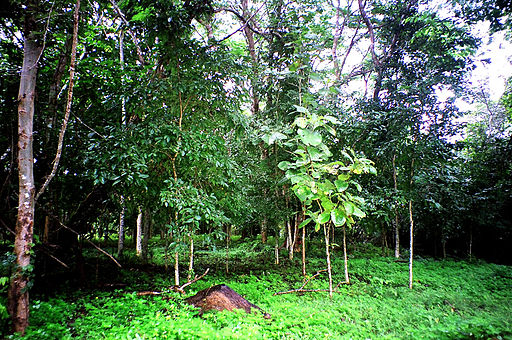
Every day after school, the son of a well-known rabbi would enter his house, place his backpack on the dining room table, leave the house through the back door, and head into the woods behind the house.
At first, the rabbi gave little thought to his son’s ritual. But it continued for days, and then for weeks. Every day, out into the woods for almost a half an hour. Then the rabbi grew concerned.
“My son,” he said one day. “I notice that every day you leave our home and spend time in the woods. What is it that you are doing there?”
“Oh, Papa,” the son replied. “There is no need to worry. I go into the woods to pray. It is in the woods that I can talk to God.”
“Oh,” the rabbi said, clearly relieved, “But as the son of a rabbi, you should know that God is the same everywhere.”
“Yes, Papa. I know that God is the same everywhere. But I am not.”


